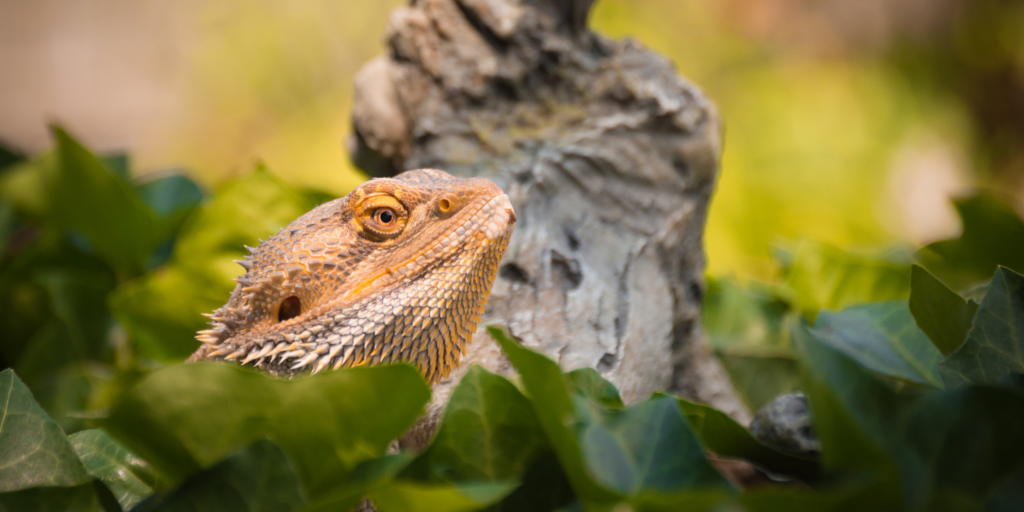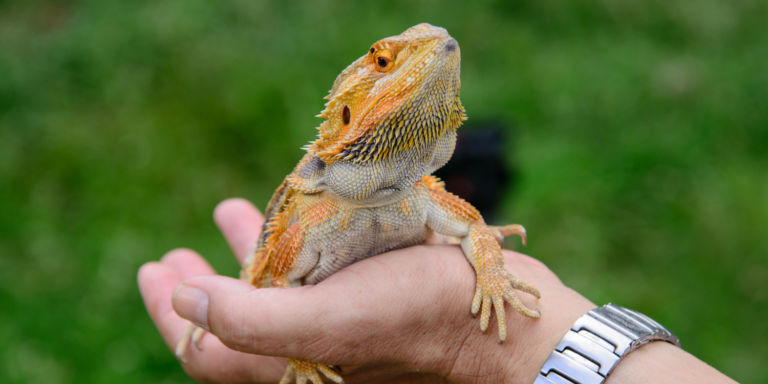You may be wondering how to take care of a baby bearded dragon properly. Bearded dragons make great pets, but they do require some special care. This guide will tell you everything you need to know about raising a healthy and happy baby bearded dragon.
Adult bearded dragons are usually between 18 and 24 inches long. Bearded dragons get their name from the spiky “beard” of skin that they can puff out when they are angry or afraid.
Bearded dragons make great pets. They are interesting to watch and relatively easy to care for. Baby bearded dragons have special needs and require a little more care than their adult counterparts. Here are some tips on how to take care of a baby bearded dragon.
Another Interesting Read: How To Travel With a Bearded Dragon
Housing For Young Bearded Dragons
Your baby bearded dragon will need a home of his own. A 10-gallon aquarium is a good size for a baby dragon. Be sure to put a layer of sand on the bottom of the tank for your pet to burrow in. You will also need to provide a basking spot for your bearded dragon.
A basking spot is an area where the temperature is about 10 degrees warmer than the rest of the tank. This can be accomplished by using a basking lamp. The basking spot should be on one end of the tank so your bearded dragon can thermoregulate his body temperature by moving from the warm basking spot to the cooler end of the tank.
Track Their Growth Rate
In the wild, healthy baby bearded dragons grow quickly. They will more than double their size in the first 6 months. In captivity, with the right care, they can grow just as fast. A good way to track your baby dragon’s growth is to take weekly photos and compare them side-by-side. You should also weigh your dragon once a week.
To wean your baby dragon off of live food, you will need to offer them a variety of food items. Start with small insects like crickets and mealworms. As they grow, you can offer them larger insects and eventually move on to vegetables. Bearded dragons are omnivores, so they need a balanced diet of both protein and vegetables.

Setting up a Bearded Dragon Tank
In the wild, they bask in the sun to regulate their body temperature. When setting up a habitat for your bearded dragon, it is important to replicate this as much as possible.
The tank should be at least 10 gallons for a baby dragon and should be equipped with a basking spot that is around 95 degrees. You can use a basking lamp and a UVB light to create the perfect temperature gradient in the tank.
Bearded dragons also need a hiding spot where they can go to feel safe and secure. This can be a small cave, a piece of driftwood, or even a cardboard box.
The substrate you choose for your bearded dragon’s habitat is also important. Baby dragons should have a substrate that is easy to dig in, like sand or calcium sand. This will help them shed their skin properly.
Bearded Dragon Enclosure: Your baby bearded dragon habitat should include a warm area, a cool area, and an area with UVB lighting. You can create a warm area by using a basking bulb. The cool area can be created by using a fluorescent light fixture. The UVB lighting should be provided by using a tube light specifically designed for reptiles.
Baby Bearded Dragon Heat: Your baby bearded dragon will need a basking spot that is between 95 and 110 degrees Fahrenheit. The cool side of the enclosure should be between 75 and 80 degrees Fahrenheit. At night, the temperature can drop to as low as 65 degrees Fahrenheit.
Feed Your Bearded Dragon Correctly
As your bearded dragon grows, so does its appetite! A baby bearded dragon will need to be fed more often than an adult, about 2-3 times a day. It’s important to feed your pet small meals so that their little stomachs can digest properly.
Once they reach adulthood, you can cut back to feeding them only once a day.
What To Feed Them
There are a variety of things that you can feed your bearded dragon, but it’s important to make sure that their diet is properly balanced. A good diet for a bearded dragon includes:
Live insects: crickets, mealworms, super worms, dubia roaches, silkworms, hornworms
Veggies: dark, leafy greens like collard greens, turnip greens, and mustard greens; squash; carrots; sweet potatoes
Fruits: strawberries, raspberries, blueberries (in moderation)
You can buy live food at your local pet store, or purchase a culture online. If you choose to culture your own food, make sure that the container you use is escape-proof!
Gut Loading
No matter where you get your live food from, it’s important to “gut load” them before feeding them to your bearded dragon. This simply means feeding the insects a nutritious diet so that they can pass those nutrients on to your pet.
To gut load insects, you can feed them a variety of fruits and vegetables, as well as commercial cricket food.

Know When to Take your Bearded Dragon to The Vet
Bearded dragons are hardy lizards, but they can still get sick. It’s important to know when to take your bearded dragon to the vet.
Signs of illness in bearded dragons include:
- Lethargy
- Loss of appetite
- Weight loss
- Breathing difficulties
- Change in color
- Skin problems
If you see any of these signs, take your bearded dragon to the vet right away.
Understand How to Handle and Transport Your Bearded Dragon Safely
Just like any other pet, it is very important to know how to handle and transport your bearded dragon safely. Baby bearded dragons are even more delicate, so it is essential to be extra careful when handling them. Here are a few tips on how to do so:
Use both hands when picking up your baby bearded dragon. Support their entire body, including their tail.
Never pick up your bearded dragon by its tail. This can cause serious injury to their spine and may even lead to paralysis.
Be very careful when transporting your bearded dragon from one place to another. Make sure they are secure and cannot fall or jump out of your hands.
Acclimate your baby bearded dragon to being handled gradually. Start by handling them for a few minutes each day and gradually increase the time.
Never handle your bearded dragon immediately after they have eaten as they may be more prone to regurgitate their meal.
Common Illnesses in Bearded Dragons To Prevent Them
Bearded dragons are just like any other pet. They can get sick and sometimes even die if not properly cared for. Now let’s go over some of the most common illnesses in bearded dragons and how to prevent them.
The number one cause of death in bearded dragons is a respiratory infection. Respiratory infections are usually caused by a bacteria or virus that gets into the dragon’s lungs.
The best way to prevent this is to make sure your dragon’s cage is clean and free of any potential contaminants. You should also take your bearded dragon to the vet for regular checkups and vaccinations.
Another common illness is a gastrointestinal problem. Gastrointestinal problems can be caused by a number of things, including stress, diet, and parasites. The best way to prevent this is to make sure your dragon’s cage is clean and free of any potential contaminants. You should also take your dragon to the vet for regular checkups and dewormings.
Conclusion – How To Take Care Of a Baby Bearded Dragon
Bearded dragons are amazing pets, but they do require some special care. In this article, we have gone over some of the most important things you need to know about how to take care of a young bearded dragon. We hope you have found this information helpful and that it will help you keep your pet healthy and happy!
You Might Also Like:
How To Bond With Your Bearded Dragon

